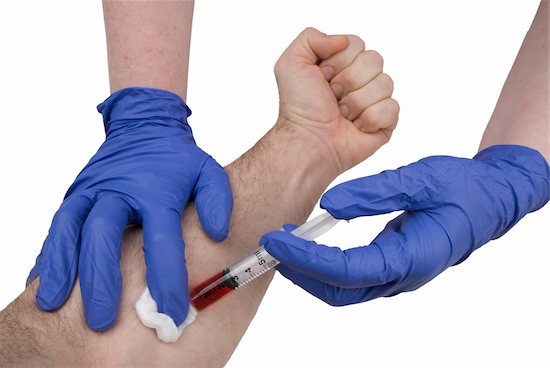Posts tagged Antiretroviral drugs

Antiretroviral Drugs for HIV Link to Neurological Issues
In the fight against HIV, antiretroviral drugs are the strongest weapon we have. While these medications do not cure or kill the virus, they stop it from progressing any further. Unfortunately, this treatment is a combination of several different types of drugs. When combined, they slow down HIV. However, according to new research, they may also leave significant neurological damage.
The Risks of Antiretroviral Drugs
Like most drugs for serious conditions, antiretroviral drugs do have side effects. However, their ability to stop the progression of HIV to AIDS has outweighed any minor complications. To this day, they are so successful that patients with AIDS are a rarity.
Some patients have been known to experience appetite loss, lipodystrophy, diarrhea, fatigue, mood changes, nausea, and bone loss. Scientists are working to make these drugs stronger and safer for patients. With the right precautions, patients can even make the side effects less debilitating.
The Connection to Alzheimer’s Disease
At the University of Pennsylvania, research has implicated some antiretroviral drugs in the progress of Alzheimer’s disease. They suggest that protease inhibitors are the cause. Protease inhibitors are the drugs that work the best against HIV. Apparently, some of these drugs promote the growth of the peptide beta-amyloid, which damages neurons.
“Protease inhibitors are very effective antiviral therapies, but they do have inherent toxicities,” said Kelly Jordan-Sciutto, senior author on the study. “Our findings may cause us to rethink how we’re using these drugs and even consider developing an adjunctive therapy to reduce some of these negative effects.”
Through testing, they were able to identify that the drugs did indeed cause the reaction and damage to the neurons. However, they are working to inhibit the enzyme called BACE1, which leads to the production of the beta-amyloid.
“Targeting PERK and/or BACE1 could help contribute to a therapeutic approach to treat drug-associated cognitive disorders.” said Jordan-Sciutto.

Beware of Dangerous ‘Shock and Kill’ Treatment for HIV
Finding effective treatment for HIV is a long-standing battle. Scientists are fighting against the disease every day. The search for answers may lead to drastic measures. However, at what point do the risk outweigh the cure? That’s the question posed by researchers at the Johns Hopkins University of Medicine when it comes to the ‘shock and kill’ treatment.
What is the ‘Shock and Kill’ Treatment for HIV?
The shock-and-kill treatment reveals HIV hidden within the cells. This is the problem that many scientists run into – HIV hides. When it is dormant, the virus does not trigger the immune system to fight back. It’s also the reason that antiretroviral therapies are only capable of keeping the disease at bay.
The proposed shock-and-kill treatment essentially wakes HIV from its dormant state to make it vulnerable to the immune system and antiretroviral drugs. However, testing this method has led scientists to believe the supposed ‘cure’ could have disastrous results.
The treatment was tested on the simian immunodeficiency virus (SIV), a disease that is found in primates and is very much similar to HIV. One of the test subjects displayed encephalitis symptoms and brain inflammation. The symptoms only worsened and the primate had to be put down humanely.
This treatment spells trouble if the disease is hiding within the brain. Activation in this area only makes a patient’s condition worse, especially when scientists do not know where the disease is hiding to begin with. Researchers advise caution.
“The potential for the brain to harbor significant HIV reservoirs that could pose a danger if activated hasn’t received much attention in the HIV eradication field,” says Janice Clements, Ph.D., professor of molecular and comparative pathobiology at the Johns Hopkins University School of Medicine. “Our study sounds a major cautionary note about the potential for unintended consequences of the shock-and-kill treatment strategy.”

Assessing the Average Life Expectancy With HIV
Studies have shown how a patient’s life expectancy with HIV has gotten better over the past 20 years. A lot of progress has been made. Researchers have found breakthrough treatment methods. And treatment itself has gotten more readily available.
It’s now well known that HIV is no longer a death march. Patients are now able to live fuller lives compared to previous decades. But how much longer are they expected to live for? And what factors lead to such vast improvements? Let’s take a closer look at that right now.
Life Expectancy With HIV Over The Years
From 1996-97, the death rate for HIV-positive people was at 7%. For people diagnosed with HIV, their average life span was typically 10 years. For 20-year-olds with the virus, it was higher. On average, they lived until 39. These numbers are now significantly better.
By 2006, that number jumped to 24 years. More than double the average from a decade previous. And a 20-year-old with HIV lived until 56 on average. That number is now in the high 60s. That leaves a separation of about 13 years between an HIV-positive and HIV-negative 20-year-old.
That’s the smallest gap in life expectancy between the two parties to date. It goes to show how far we’ve come in two decades. But that there’s still work to be done.
How Life Expectancy Has Improved
Antiretroviral Therapy (ART) was not yet readily available in 1996. That’s changed over the past two decades. As a result of there being easier access ART, it revolutionized HIV treatment. By preventing the virus from reproducing, ART is able to lower the viral load in the bloodstream. When successful, the viral load is so low that the virus is undetectable. HIV is still there. And it can still be spread to someone else. But there aren’t any symptoms.
Treatment is more effective across the board. Over half of those eligible for treatment are now receiving it. Also, Linkage to Care numbers continues to increase. The necessary work is being done.
In addition to being more effective, HIV treatment is now simpler, too. Fewer pills are needed. And there’s no longer a complex schedule to follow. A lot of patients can now take one pill a day and be fine. They work for a longer period of time and have fewer side-effects. It’s less likely for a patient to have to switch medications periodically.

Improving Linkage to Care is the Next Goal for HIV Treatment
Linkage to Care (LTC) is the three-month period of time between diagnosis and medical treatment for HIV. Groundwork is laid for future treatment during this time. Newly-diagnosed patients need to understand the ins and outs of their diagnosis. It’s a crucial part in such a transitional time in their lives.
Studies have shown a wide range of information regarding how many HIV patients are getting LTC. The number is often between 59% and 80%. Many consider this to be too low a number either way. This has prompted more developed nations to set their Linkage to Care rate to 90% by 2020.
The World Health Organization (WHO) stresses the importance of providing a service built around the health needs of those living with HIV. A diagnosis of this magnitude can make a patient feel vulnerable. Consequently, WHO believes treating them with dignity goes a long way.
WHO recently gave a list of suggestions that studies suggest would help improve LTC. Here is what they find to be most helpful.
Steps to Help Increase Linkage to Care
- Streamlined interventions to reduce the time between diagnosis and engagement in care. This includes enhanced linkage with case management and support for HIV disclosure.
- Carrying out routine viral load testing 6 months and 12 months after Antiretroviral Therapy (ART). If the patient is stable on ART, then every 12 months would be all that’s necessary.
- Improving the data used to identify the linkage’s quality.
- Less frequent clinic visits for those stable on ART. As a result of ART working for them, every 3-6 months would be sufficient.
- Programs that provide community support boosts retention in care. Methods suggested for them to use include: interventions, peer counselors, and mobile communication.
When Linkage to Care is initiated early for HIV patients, better medical treatment is possible. Increasing the amount of people who receive earlier treatment is a great first step in managing the disease.

Nanotechnology and HIV Drug Therapies
Nanotechnology sounds like science fiction. However, it is very real, and scientists are manipulating matter on an atomic, molecular, and supramolecular scale in order to achieve great things. One prime example is the development of HIV drug therapies. In a research study by the University of Liverpool, they sought to improve how HIV drugs are delivered to patients.
The Problem With HIV Drugs
HIV is a serious disease. It requires powerful medicine in order to combat its effects. Unfortunately, the drugs used to combat the virus need to be taken daily. This can be difficult for many patients. Keeping up with their regimen requires sticking to an intense schedule and remembering to take pills. Some even quit taking the drugs because of how demanding the therapy is.
With Solid Drug Nanoparticle (SDN) technology, scientists hope to improve HIV drugs. HIV patients want better drugs. Theoretically, this technology should make it easier for their bodies to absorb them. If successful, this form of nanotechnology would reduce the number or doses that HIV patients have to take, and possibly save them money.
Making Nanotechnology Applicable
Nanotechnology is still a relatively new field, which means that it is going to take some time to develop. Even worse, this type of medicine isn’t readily available to HIV patients. Currently, the University of Liverpool is developing a novel water dispersible nanotherapy for a poorly soluble antiretroviral medicine called lopinavir. It is still in the testing phase; however, some are hopeful of its success.
Research leader and Pharmacologist Professor Andrew Owen says “The fruits of our interdisciplinary research are beginning to be realized. Our approach has the potential to overcome challenges with current antiretroviral therapy, which include administration of high doses needed to achieve efficacious concentrations in the body, and the urgent need for better formulations for children living with HIV.”





